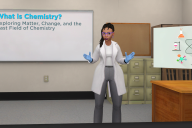You have /5 articles left.
Sign up for a free account or log in.
The Education Department in the Obama administration showed uncommon interest in the use of technology to promote improvements in higher education. There was plenty of rhetoric, and also regular meetings that brought together businesses (start-ups and big players alike), academic leaders and experts in digital learning. Just days before the Inauguration, the Education Department issued "Reimagining the Role of Technology in Higher Education," in many ways a summary of the ideas that the ideas that the Obama administration had talked up during the last eight years.
The report combines several themes of the Obama administration: The United States needs more adults with various forms of college degrees and credentials. Many nontraditional students are poorly served by traditional models of higher education. Innovation is the solution.
"In order for higher education to fulfill its promise as a great equalizer, we need continued innovation that can move us toward increased access, affordability and equity," the report says. "This innovation will develop an ecosystem that will include a range of opportunities for a variety of high-quality educational experiences and credentials with marketplace value suited for the differing needs of students."
Many of the examples offered in the report (along with the expected caveats about how inclusion isn't an official endorsement) focus on creating a "student-centered higher ed ecosystem," featuring flexible scheduling and locations, learning with peers and education oriented around helping people advance in their careers.
Here are some of the programs -- some technology intensive and others not -- that received shoutouts as exemplars of one or more of those features:
- The Virginia Community College System's Wizard, an online coaching system through which prospective students or students can provide information about their career goals and then receive guidance about appropriate academic programs, and paths to completing them.
- Austin Peay State University's Degree Compass, an online advising tool that uses predictive analytics to give students what has been shown to be an unusually accurate picture of how they will succeed in various courses. (Here is a background article from Inside Higher Ed on how the program was developed.)
- Southern New Hampshire University's JUICE, for Just-In-Time, Contextualized and Empowering, a platform that provides learning tools to allow those who might need developmental education to simultaneously enroll in college-level courses. The tool has been used in College for America, SNHU's competency-based division.
- LaGuardia Community College's Classroom Notebook, which creates "pedagogy circles" of six-eight professors to work together to discuss teaching challenges and successes.
- Barnard College's Reacting to the Past, a history "game" in which students re-enact various events, creating and sharing information about them. (Here is a background article from Inside Higher Ed on the approach.)
- Rice University's OpenStax, which is one of the largest repositories of open educational resources.
- University System of Maryland's Maryland Mathematics Reform Initiative, which consists of two alternative pathways to the traditional algebra-intensive, calculus-driven mathematics course sequence. One is a statistics pathway for health and social science majors and the other is a quantitative reasoning pathway for liberal arts and fine arts majors.
Inside Higher Ed's Joshua Kim offers his analysis of the report -- and why it should be read -- here.







